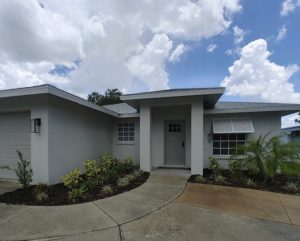
Project 180 is excited to announce the opening of Keifer’s House in Sarasota County
Sarasota, FL, September 10, 2020: Project 180, a Sarasota-based nonprofit, has opened its second Residential Program home to provide comprehensive services for formerly incarcerated men in active recovery.
The opening of Keifer’s House underscores Project 180’s holistic reentry model for reintegrating formerly incarcerated citizens into community life. Emphasizing a ‘recovery first’ foundation to rebuild lives shattered by drug and alcohol addiction, Project 180 provides safe and stable housing for up to two years and a structured, hands-on recovery program tailored to meet the unique needs of each resident.
Keifer’s House is a newly renovated, fully furnished, three-bedroom and two-bath home nestled in a friendly neighborhood that comfortably accommodates up to six residents. A local donor furnished the entire home to support residents in turning their lives around.
Thanks to a generous donation provided by The Charles and Margery Barancik Foundation in 2018, Project 180 purchased its first home, Nik’s House, and laid the foundation for the opening of a second property just two years later. The 2020 Giving Challenge presented by The Community Foundation of Sarasota County and strengthened by The Patterson Foundation, provided the remaining seed money to rent Keifer’s House.
As Project 180 continues to stand on the front lines of the recidivism crisis, expand its community impact, and provide lifesaving programs and services, Barbara Richards, Project 180 President/CEO and Founder, welcomes a new Development Coordinator to the team, Sandra Baxter. Baxter, who holds a Bachelor of Arts in Political Science from University of South Florida, will assist in providing meaningful experiences for donors, volunteers and supporters who save and transform lives every day through their generosity.
Baxter brings a “unique background in business development, communications, and sales to this newly created role. We’re thrilled that she’s joined the Project 180 family,” Richards said.
For more information on Project 180, visit www.project180reentry.org and find Project 180 on Twitter, Facebook, and Instagram.
About Project 180: Project 180 seeks to reduce recidivism by providing workforce education and financial literacy classes for inmates, an annual reentry lecture series for the general public, information and referrals for formerly incarcerated individuals seeking housing, programs, and employment, and a comprehensive, whole-life Residential Program for men in recovery. Project 180 seeks to build community, not prisons.
###


 Our goal is to reduce the impact of repeat offenders upon public safety, public spending, Florida families and individual lives.
Our goal is to reduce the impact of repeat offenders upon public safety, public spending, Florida families and individual lives.